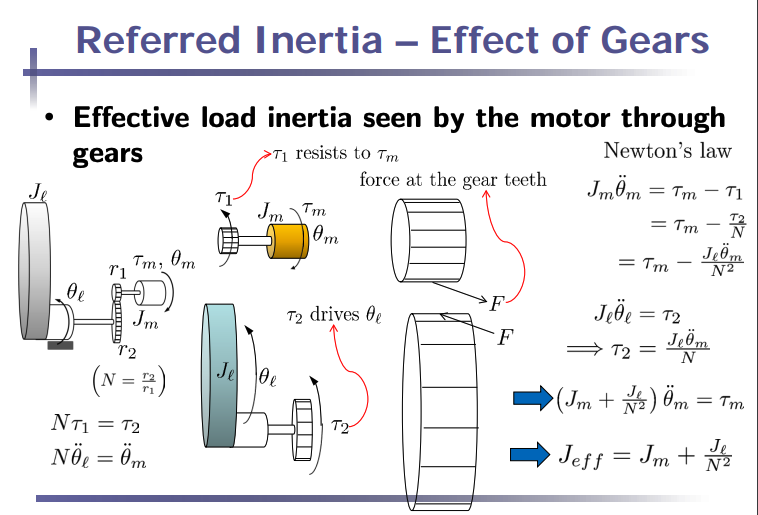When a motor is used with a gear system, the inertia of a load (denoted as ) is felt by the motor through a system of gears. Gears act to scale the effect of the load inertia as seen by the motor, essentially changing the “effective” inertia the motor experiences.

Above, the system consists of a motor with inertia driving a load with inertia through a gear mechanism. The gears have radii on the motor side and on the load side, and gear ratio .
Torque is applied by the motor to the gear system. The torque on the load side is , while the torque on the motor side is . We can use Newton’s law to relate the torque and angular velocity:
- for the motor
- for the load
We can then factor in the gear teeth. The force at the gear teeth, , is the same for both sides of the gear. This force creates the torque on each side of the system. The torque on the motor side, , and the torque on the load size, , are related by the gear ratio:
Similarly, for angular velocities and accelerations:
which in turn gives
We can then re-write our Newton’s Law expressions as:
or
We can re-write this with an effective inertia term: